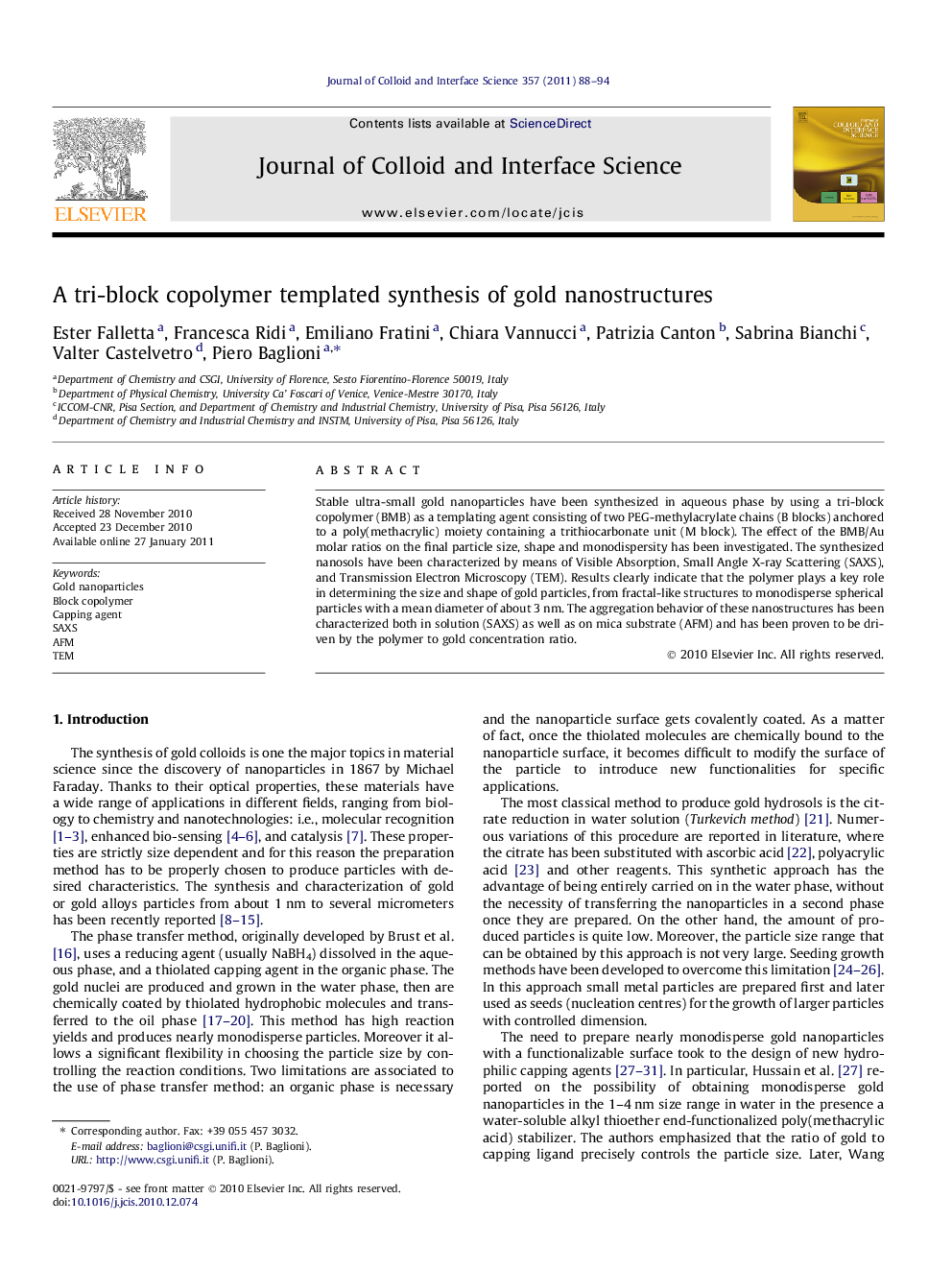| Article ID | Journal | Published Year | Pages | File Type |
|---|---|---|---|---|
| 608551 | Journal of Colloid and Interface Science | 2011 | 7 Pages |
Stable ultra-small gold nanoparticles have been synthesized in aqueous phase by using a tri-block copolymer (BMB) as a templating agent consisting of two PEG-methylacrylate chains (B blocks) anchored to a poly(methacrylic) moiety containing a trithiocarbonate unit (M block). The effect of the BMB/Au molar ratios on the final particle size, shape and monodispersity has been investigated. The synthesized nanosols have been characterized by means of Visible Absorption, Small Angle X-ray Scattering (SAXS), and Transmission Electron Microscopy (TEM). Results clearly indicate that the polymer plays a key role in determining the size and shape of gold particles, from fractal-like structures to monodisperse spherical particles with a mean diameter of about 3 nm. The aggregation behavior of these nanostructures has been characterized both in solution (SAXS) as well as on mica substrate (AFM) and has been proven to be driven by the polymer to gold concentration ratio.
Graphical abstractA novel hydrophilic tri-block copolymer (BMB) has been used as a capping and stabilizing agent for in water Au nanoparticles synthesis. The BMB/Au ratio affects the particle size, shape and monodispersity.Figure optionsDownload full-size imageDownload high-quality image (59 K)Download as PowerPoint slideResearch highlights► Ultra-small gold nanoparticles were synthesized in water with a new capping agent. ► The capping agent is a hydrophilic tri-block copolymer (BMB). ► The BMB/Au ratios affect the particle size, shape and polydispersity allowing their control.
